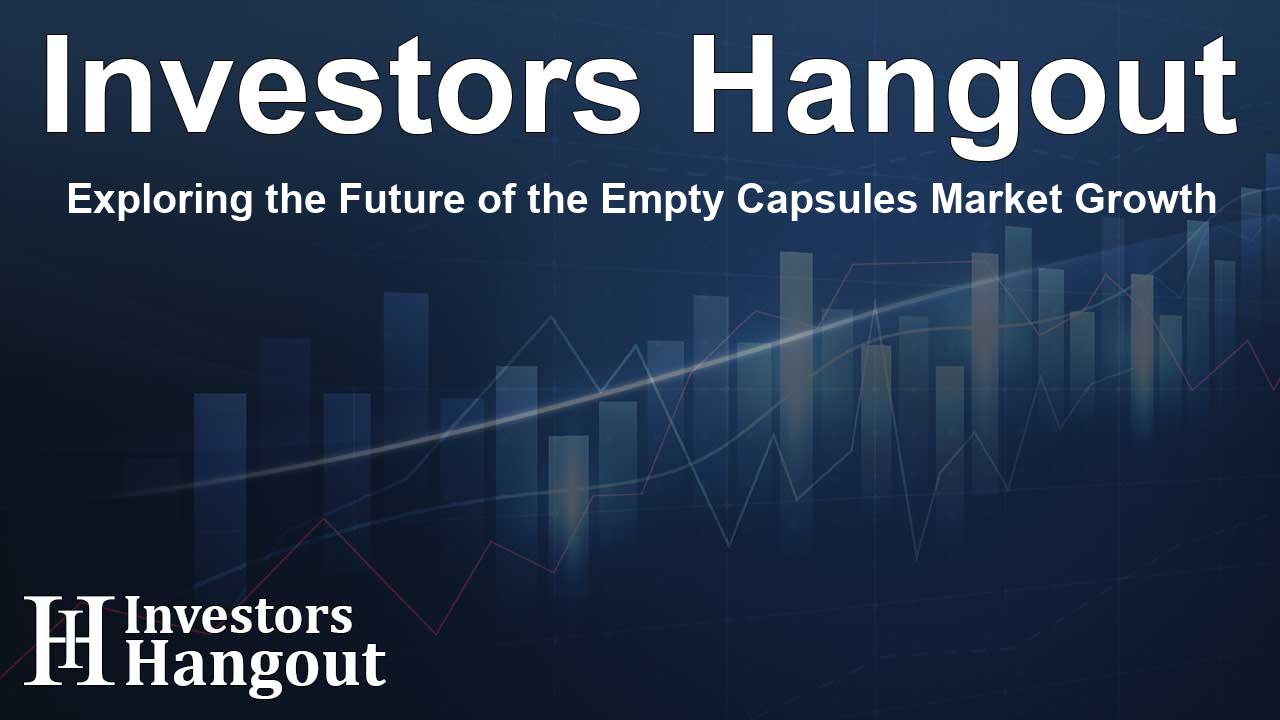Exploring the Future of the Empty Capsules Market Growth

Understanding the Empty Capsules Market Dynamics
As the global healthcare landscape evolves, the empty capsules market is gaining substantial traction. Recent analyses indicate that the market, valued at USD 3.35 billion, is expected to expand significantly, reaching USD 5.36 billion by 2032.
Market Growth Factors
This remarkable growth can be attributed to several pivotal factors. A crucial driver is the increasing demand for effective drug delivery systems that enhance bioavailability. As pharmaceutical companies innovate, the need for versatile delivery options has intensified, further propelled by the rising popularity of plant-based and clean-label dietary supplements.
The Role of Geographical Trends
While growth is happening worldwide, certain regions are leading the charge. The U.S. market accounted for USD 1.06 billion in 2023 and anticipates reaching USD 1.59 billion by 2032. This expansion is mainly fueled by robust research and development activities in the pharmaceutical sector and supportive regulatory frameworks by governing bodies.
Innovations in Pharmaceutical and Nutraceutical Sectors
In the pharmaceutical and nutraceutical industries, empty capsules have become essential. They not only promote stability but also enhance the taste profile of medications, making them more palatable for consumers. Increasing investments in clean-label products and vegetarian alternatives are driving innovations in capsule manufacturing.
Market Segmentation Insights
Market segmentation provides clarity on the dynamics within the empty capsules realm. The gelatin capsules segment dominated with a significant 68% market share by revenue in 2023, favored for their cost-effectiveness and adaptability for various formulations.
Capsules Based on Functionality
In terms of functionality, immediate release capsules took the lead, comprising 48% of revenue, proving essential for conditions requiring fast intervention, such as infections and acute pain management.
Application Areas
From an application standpoint, antibiotic and antibacterial drugs currently represent the largest segment within the market, showcasing a 22% share. Capsules provide an optimal delivery mechanism for these medications due to their ease of ingestion and dose consistency.
Regional Market Performances
The Asia Pacific has established itself as a leading region in the empty capsules market, accounting for 42% of the revenue share in 2023. The region's pharmaceutical manufacturing benefits from lower costs and increased government initiatives supporting drug development.
Recent Innovations and Developments
In recent months, notable advancements have been observed within the industry. For instance, a major player has significantly enhanced its European presence through upgrades to its manufacturing plants, thereby optimizing supply chain logistics globally. Another player has made headlines with its acquisition of a well-known biologics manufacturing site, demonstrating commitment to the development of next-generation biologics.
Understanding Consumer Behavior
As consumer preferences shift towards personalized medicine, the demand for various capsule properties increases. This trend not only diversifies the market’s offerings but also encourages suppliers to innovate continually, ensuring they meet the evolving needs of healthcare practitioners and patients alike.
Looking Ahead: What to Expect
As we move toward the future, the empty capsules market exhibits great potential for growth and diversification. With continuous investments in research, along with technological advancements in capsule manufacturing, the industry is likely to adapt and flourish.
The Impact of Rising Health Consciousness
Consumer interest in personal wellness and preventive healthcare is also expanding the market, as more individuals turn to nutraceuticals for their health needs. The intersection of this rising health consciousness with the pharmaceutical innovations of empty capsules creates a vibrant market atmosphere.
Frequently Asked Questions
What is driving the growth of the empty capsules market?
The growth is driven by increasing demand for effective drug delivery systems and the rising popularity of plant-based supplements.
Which region dominates the empty capsules market?
The Asia Pacific region leads the sector, accounting for a significant share of market revenue.
How are innovations influencing the empty capsules market?
Innovations in manufacturing processes and product offerings are helping meet the changing demands of consumers and healthcare providers.
What application segments are leading in the empty capsules market?
Antibiotic and antibacterial drugs segments have shown the most substantial growth, becoming the most prevalent application area.
What role does consumer preference play in this market?
Shifting consumer preferences towards personalized medicine and health-conscious products are expanding the empty capsules market significantly.
About The Author
Contact Ryan Hughes privately here. Or send an email with ATTN: Ryan Hughes as the subject to contact@investorshangout.com.
About Investors Hangout
Investors Hangout is a leading online stock forum for financial discussion and learning, offering a wide range of free tools and resources. It draws in traders of all levels, who exchange market knowledge, investigate trading tactics, and keep an eye on industry developments in real time. Featuring financial articles, stock message boards, quotes, charts, company profiles, and live news updates. Through cooperative learning and a wealth of informational resources, it helps users from novices creating their first portfolios to experts honing their techniques. Join Investors Hangout today: https://investorshangout.com/
The content of this article is based on factual, publicly available information and does not represent legal, financial, or investment advice. Investors Hangout does not offer financial advice, and the author is not a licensed financial advisor. Consult a qualified advisor before making any financial or investment decisions based on this article. This article should not be considered advice to purchase, sell, or hold any securities or other investments. If any of the material provided here is inaccurate, please contact us for corrections.
